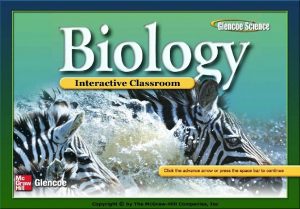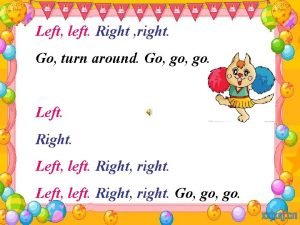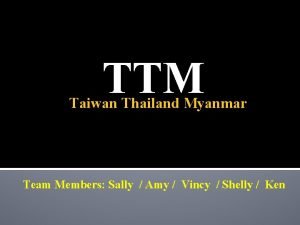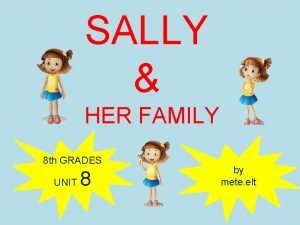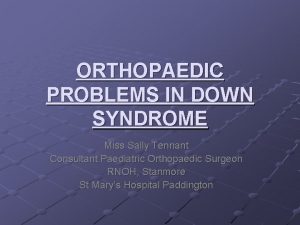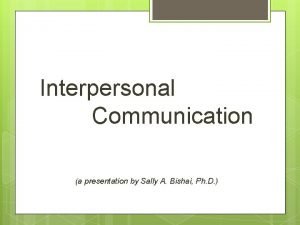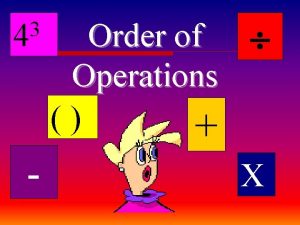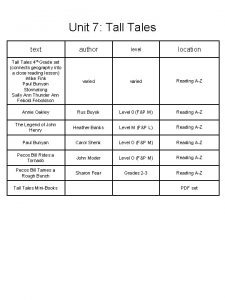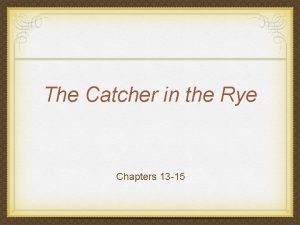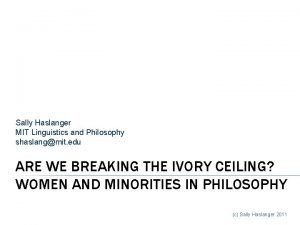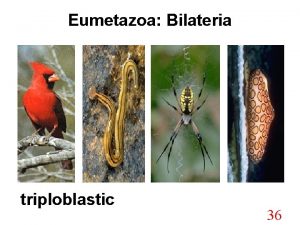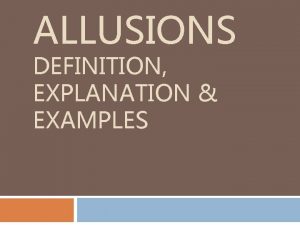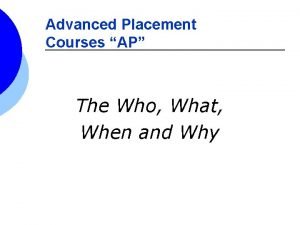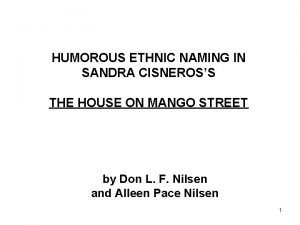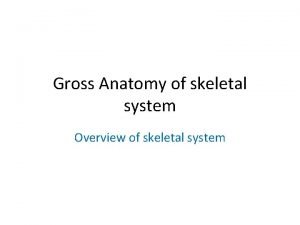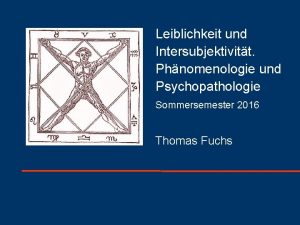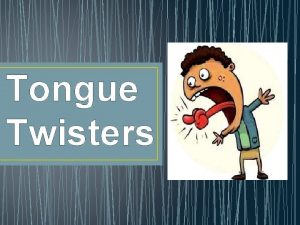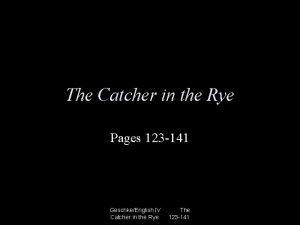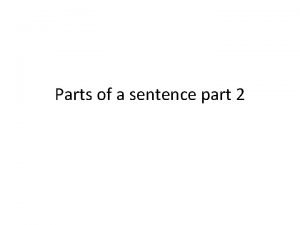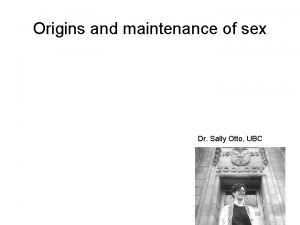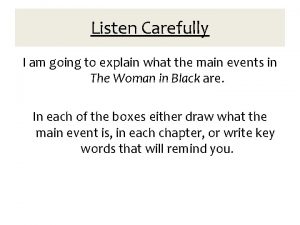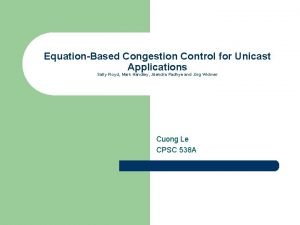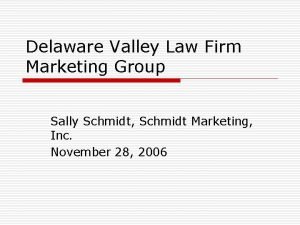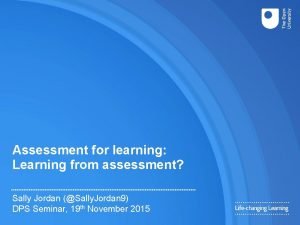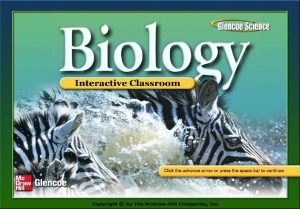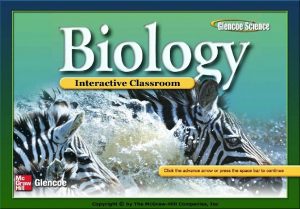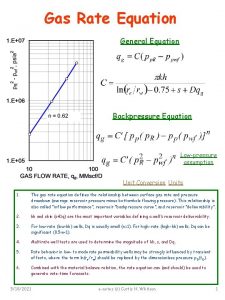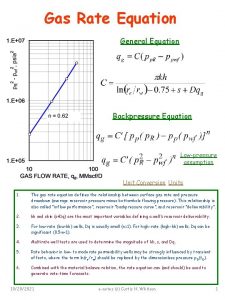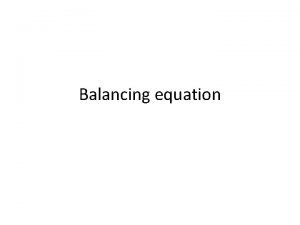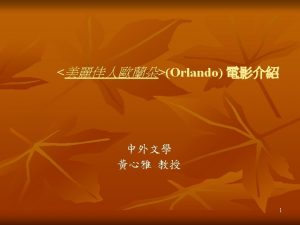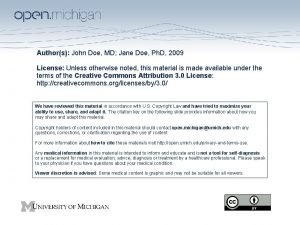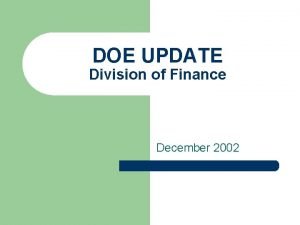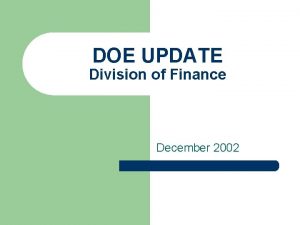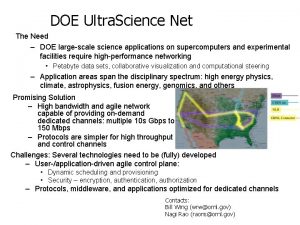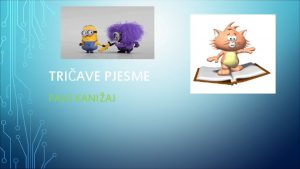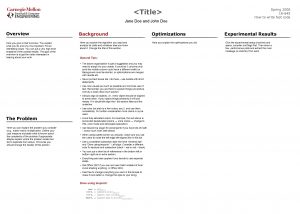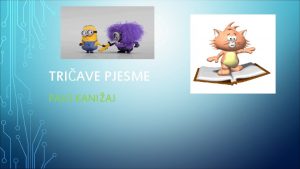The Equation Sally Doe has 88 right now





















































































- Slides: 85


The Equation Sally Doe has 88% right now in Q 1 What does she need to get on the final to guarantee at least a B in the class?

Chapter 11 Complex Inheritance and Human Heredity 11. 1 Basic Patterns of Human Inheritance Inferring Genotypes § Knowing physical traits can determine what genes an individual is most likely to have. Predicting Disorders § Record keeping helps scientists use pedigree analysis to study inheritance patterns, determine phenotypes, and ascertain genotypes.

Match the disease to its description _____Cystic fibrosis _____Albinism _____Galactosemia _____Tay Sachs _____Huntingtons _____Achondroplasia

Chapter 11 Complex Inheritance and Human Heredity 11. 1 Basic Patterns of Human Inheritance Recessive Genetic Disorders § A recessive trait is expressed when the individual is homozygous recessive for the trait.

Chapter 11 Complex Inheritance and Human Heredity 11. 1 Basic Patterns of Human Inheritance Cystic Fibrosis § Affects the mucus-producing glands, digestive enzymes, and sweat glands § Chloride ions are not absorbed into the cells of a person with cystic fibrosis but are excreted in the sweat. § Without sufficient chloride ions in the cells, a thick mucus is secreted.

Chapter 11 Complex Inheritance and Human Heredity 11. 1 Basic Patterns of Human Inheritance Albinism § Caused by altered genes, resulting in the absence of the skin pigment melanin in hair and eyes § White hair § Very pale skin § Pink pupils

Chapter 11 Complex Inheritance and Human Heredity 11. 1 Basic Patterns of Human Inheritance Tay-Sachs Disease § Caused by the absence of the enzymes responsible for breaking down fatty acids called gangliosides § Gangliosides accumulate in the brain, inflating brain nerve cells and causing mental deterioration.

Chapter 11 Complex Inheritance and Human Heredity 11. 1 Basic Patterns of Human Inheritance Galactosemia § Recessive genetic disorder characterized by the inability of the body to digest galactose.


Chapter 11 Complex Inheritance and Human Heredity 11. 1 Basic Patterns of Human Inheritance Dominant Genetic Disorders § Huntington’s disease affects the nervous system. § Achondroplasia is a genetic condition that causes small body size and limbs that are comparatively short. § A dominant trait is expressed when the individual is homozygous dominant or heterozygous.

Chapter 11 Complex Inheritance and Human Heredity 11. 1 Basic Patterns of Human Inheritance Huntington’s Disease § Caused by the inheritance of a faulty dominant allele of a crucial neural protein (normal version is recessive) § Person is normal until age 45 -50 when neural degeneration starts causing mental deterioration and lack of ability to move body § 100% fatal

Chapter 11 Complex Inheritance and Human Heredity 11. 1 Basic Patterns of Human Inheritance Achondroplasia § Caused by the inheritance of a faulty dominant allele for bone growth which causes person’s bones to stop growing prematurely § Causes short arms and legs / large relative head size, but no other defects (person is normal otherwise) § 2 people w/ achondroplasia can have normal height children

Chapter 11 Complex Inheritance and Human Heredity

Match each symbol to its meaning in pedigree diagrams: ___ Box ___ Circle ___ Horizontal line ___Vertical line ___Unshaded box or circle ___Shaded box or circle ___Half filled in box or circle ___Strike across box or circle Create a pedigree for this scenario:

Chapter 11 Complex Inheritance and Human Heredity 11. 1 Basic Patterns of Human Inheritance Pedigree Analysis § A diagram that traces the inheritance of a particular trait through several generations

Pedigree symbols


Chpt 11. 2 • Non-Mendellian genetics: – Incomplete dominance – Co-dominance – Sex linked traits – Polygenic genetics

Define / explain what incomplete dominance is by describing an example

Chapter 11 Complex Inheritance and Human Heredity 11. 2 Complex Patterns of Inheritance Incomplete Dominance § The heterozygous phenotype is an intermediate phenotype between the two homozygous phenotypes. Genotype+

Incomplete Dominance One allele is active (red color allele) Other allele is defective (white = no color being made) In heterozygote, one functioning allele is not enough to make phenotype completely that trait Similar to normal dominance, but in that case one functioning allele makes enough protein to make heterozygote phenotype look same as homozygous dominant

Define / explain what Codominance is by describing an example:

Chapter 11 Complex Inheritance and Human Heredity 11. 2 Complex Patterns of Inheritance Codominance § Both alleles are expressed in the heterozygous condition.

Co-Dominance Two alleles, both co-dominant (both will coexist) Ex. Roan Cattle RR alleles = red WW alleles = white RW alleles = red + white hairs on same cow

§ Ex Human blood types § 3 Alleles: IA IB i § A (IA) and B (IB) are codominant to each other § O (i) is recessive to both A and B

Draw a sketch of what each red blood cell would look like regarding surface proteins & what antibodies the person has present (if any):

• Human blood types • 3 alleles present in the gene pool (A, B, O) • Each person can have two alleles do there are 4 possible blood types: A, B, AB, O A= AA or AO B= BB or BO AB = AB O= OO

Co-dominance: Blood types


Transfusions When figuring out transfusions, only pay attention to the antibodies in the recipient Ex. Type A person in accident…what blood types ok for them to get? A person has anti B antibodies…so no type B proteins allowed So A person can get: O, A

Non clumpy is good!! Clumpy= dead!! For lab: add blood, add specific antibody…if clumping = that specific protein is present


Explain why Colorblindness is more rare in females

Sex linked inheritance • Although the anatomical and physiological differences between women and men are numerous, the chromosomal basis of sex is rather simple. • In human and other mammals, there are two varieties of sex chromosomes, X and Y. – An individual who inherits two X chromosomes usually develops as a female. – An individual who inherits an X and a Y chromosome usually develops as a male.

Chapter 11 Complex Inheritance and Human Heredity 11. 2 Complex Patterns of Inheritance Sex Determination § Sex chromosomes determine an individual’s gender.

SRY gene on Y chromosome only In individuals with the SRY gene (sex determining region of the Y chromosome), the generic embryonic gonads are modified into testes. Activity of the SRY gene triggers a cascade of biochemical, physiological, and anatomical features because it regulates many other genes. In addition, other genes on the Y chromosome are necessary for the production of functional sperm. In individuals lacking the SRY gene, the generic embryonic gonads develop into ovaries.

Lots of genes are on the X chromosome, not only the “girl” stuff, but stuff all humans need to survive • In addition to their role in determining sex, the X chromosome, has genes for many characters unrelated to sex… • (. Hair, eyes, clot formation, muscle development, +others)

Sex linked recessive disorders: -red green color blindness -hemophilia -Duchenne muscular dystrophy If a sex-linked trait is due to a recessive allele, a female will have this phenotype only if homozygous. (Heterozygous females will be carriers. ) Because males have only one X chromosome (hemizygous), any male receiving the recessive allele from his mother will express the trait. The chance of a female inheriting a double dose of the mutant allele is much less than the chance of a male inheriting a single dose. Therefore, males are far more likely to inherit sex-linked recessive disorders than are females.

What does “Polygenic” mean? How do you know if a trait is polygenic?

Chapter 11 Complex Inheritance and Human Heredity 11. 2 Complex Patterns of Inheritance Polygenic Traits § Polygenic traits arise from the interaction of multiple pairs of genes.

Explain how 2 alleles for skin color can produce a spectrum of human skin tones. Show proposed genotype for lightest skin tone person possible vs. darkest skin tone person possible

Polygeneic Inheritance More than one gene involved with the trait Ex. Hu skin color -3 homologous chromosomes have gene for color on them -2 alleles (dark + light)

What is a karyotype?

Chapter 11 Complex Inheritance and Human Heredity 11. 3 Chromosomes and Human Heredity Karyotype Studies § Karyotype—micrograph in which the pairs of homologous chromosomes are arranged in decreasing size. § Images of chromosomes stained during metaphase § Chromosomes are arranged in decreasing size to produce a micrograph.

Draw a karyotype of a female organism in which 2 n=8 showing trisomy of chromosome 3


Chapter 11 Complex Inheritance and Human Heredity 11. 3 Chromosomes and Human Heredity Nondisjunction § Cell division during which sister chromatids fail to separate properly § Down syndrome

Explain the cause of Down Syndrome


Trisomies 21: Down Syndrome 18: Edwards Syndrome 13: Patau syndrome

Chapter 11 Complex Inheritance and Human Heredity

Explain the benefits and risks associated with each fetal test Test Benefit Risk How it works Amniocentesis Chorionic villus sampling Ultrasound

· Prenatal diagnosis of genetic and congenital abnormalities. · Invasive techniques. · 1. Amniocentesis. Draw amniotic fluid, check cells DNA for genetic problems 2. Chorionic Vilus sampling Take tiss. Sample of placenta and check DNA

· Noninvasive techniques. · Ultrasound imaging.

Chapter 11 Complex Inheritance and Human Heredity 11. 3 Chromosomes and Human Heredity Telomeres Telomere: End of a chromosome. In vertebrate cells, each telomere consists of thousands of copies of the same DNA sequence, repeated again and again This region of repetitive DNA at the end of a chromosome protects the chromosome.

Fetal testing Product: Describe: -How each test works (Karyotype, ultrasound, CVS, Amnio) -Benefits of the test -Risks of the test Choices: -”illustrated chart” -Medical advertisements (w/ risks as fine print!) -Debate dialogue of a “Pro” testing person for each vs. a “con” testing person.

Grand Finale of Q 1 Bio: Spidey doing Napolean Dynamite dance!!!

Chapter 11 Complex Inheritance and Human Heredity Chapter Resource Menu Chapter Diagnostic Questions Formative Test Questions Chapter Assessment Questions Standardized Test Practice biologygmh. com Glencoe Biology Transparencies Image Bank Vocabulary Animation Click on a hyperlink to view the corresponding lesson.

Chapter 11 Complex Inheritance and Human Heredity Chapter Diagnostic Questions Identify the disease characterized by the absence of melanin. A. albinism B. cystic fibrosis C. galactosemia D. Tay-Sachs

Chapter 11 Complex Inheritance and Human Heredity Chapter Diagnostic Questions An individual with Tay-Sachs disease would be identified by which symptom? A. excessive mucus production B. an enlarged liver C. a cherry-red spot on the back of the eye D. vision problems

Chapter 11 Complex Inheritance and Human Heredity Chapter Diagnostic Questions Under what circumstances will a recessive trait be expressed? A. A recessive allele is passed on by both parents. B. One parent passes on the recessive C. allele. The individual is heterozygous for the D. trait. There is a mutation in the dominant gene.

Chapter 11 Complex Inheritance and Human Heredity 11. 1 Formative Questions Which of Dr. Garrod’s observations about alkaptonuria was most critical to his determination that it is a genetic disorder? A. It appears at birth and runs in families. B. It is linked to an enzyme deficiency. C. It continues throughout a patient’s life, affecting bones and joints. D. It is caused by acid excretion and results in black urine.

Chapter 11 Complex Inheritance and Human Heredity 11. 1 Formative Questions Which is the genotype of a person who is a carrier for a recessive genetic disorder? A. DD B. Dd C. dd D. d. E

Chapter 11 Complex Inheritance and Human Heredity 11. 1 Formative Questions Albinism is a recessive condition. If an albino squirrel is born to parents that both have normal fur color, what can you conclude about the genotype of the parents? A. at least one parent is a carrier B. both parents are carriers C. both parents are homozygous recessive D. at least one parent is homozygous dominant

Chapter 11 Complex Inheritance and Human Heredity 11. 2 Formative Questions When a homozygous male animal with black fur is crossed with a homozygous female with white fur, they have offspring with gray fur. What type of inheritance does this represent? A. dosage compensation B. incomplete dominance C. multiple alleles D. sex-linked

Chapter 11 Complex Inheritance and Human Heredity 11. 2 Formative Questions Of the 23 pairs of chromosomes in human cells, one pair is the _______. A. autosomes B. Barr bodies C. monosomes D. sex chromosomes

Chapter 11 Complex Inheritance and Human Heredity 11. 2 Formative Questions Which is an example of a polygenic trait? A. blood type B. color blindness C. hemophilia D. skin color

Chapter 11 Complex Inheritance and Human Heredity 11. 3 Formative Questions What does a karyotype show? A. The blood type of an individual. B. The locations of genes on a chromosome. C. The cell’s chromosomes arranged in order. D. The phenotype of individuals in a pedigree.

Chapter 11 Complex Inheritance and Human Heredity 11. 3 Formative Questions What is occurring in this diagram? A. multiple alleles B. nondisjunctio n C. nonsynapsis D. trisomy

Chapter 11 Complex Inheritance and Human Heredity 11. 3 Formative Questions What condition occurs when a person’s cells have an extra copy of chromosome 21? A. Down syndrome B. Klinefelter’s syndrome C. Tay-Sachs syndrome D. Turner’s syndrome

Chapter 11 Complex Inheritance and Human Heredity Chapter Assessment Questions Use the figure to describe what the top horizontal line between numbers 1 and 2 indicates. A. 1 and 2 are siblings B. 1 and 2 are parents C. 1 and 2 are offspring D. 1 and 2 are carriers

Chapter 11 Complex Inheritance and Human Heredity Chapter Assessment Questions Which is not an allele in the ABO blood group? A. IA B. IO C. IB D. i

Chapter 11 Complex Inheritance and Human Heredity Chapter Assessment Questions Down Syndrome results from what change in chromosomes? A. one less chromosome on pair 12 B. one extra chromosome on pair 21 C. one less chromosome on pair 21 D. one extra chromosome on pair 12

Chapter 11 Complex Inheritance and Human Heredity Standardized Test Practice If a genetic disorder is caused by a dominant allele, what is the genotype of those who do not have the disorder? A. heterozygous B. homozygous dominant C. homozygous recessive

Chapter 11 Complex Inheritance and Human Heredity Standardized Test Practice Analyze this pedigree showing the inheritance of a dominant genetic disorder. Which would be the genotype of the first generation father? A. RR B. Rr C. rr

Chapter 11 Complex Inheritance and Human Heredity Standardized Test Practice Shorthorn cattle have an allele for both red and white hair. When a red-haired cow is crossed with a white-haired bull, their calf has both red and white hairs scattered over its body. What type of inheritance does this represent? A. codominance B. dosage compensation C. epistasis D. sex-linked

Chapter 11 Complex Inheritance and Human Heredity Standardized Test Practice Why are males affected by recessive sexlinked traits more often than are females? A. Males have only one X chromosome. B. Males have two X chromosomes. C. Males have only one Y chromosome. D. The traits are located on the Y chromosomes.

Chapter 11 Complex Inheritance and Human Heredity Standardized Test Practice A carrier of hemophilia and her husband, who is unaffected by the condition, are expecting a son. What is the probability that their son will have hemophilia? A. 25% B. 50% C. 75% D. 100%

Chapter 11 Complex Inheritance and Human Heredity Glencoe Biology Transparencies

Chapter 11 Complex Inheritance and Human Heredity Image Bank

Chapter 11 Complex Inheritance and Human Heredity Vocabulary Section 1 carrier pedigree

Chapter 11 Complex Inheritance and Human Heredity Vocabulary Section 2 incomplete sex-linked trait dominance codominance multiple alleles epistasis sex chromosome autosome polygenic trait

Chapter 11 Complex Inheritance and Human Heredity Vocabulary Section 3 karyotype telomere nondisjunction

Chapter 11 Complex Inheritance and Human Heredity Animation § Visualizing Nondisjunction
 Right product right place right time right price
Right product right place right time right price Right time right place right quantity right quality
Right time right place right quantity right quality The right man on the right place at the right time
The right man on the right place at the right time Sally equation
Sally equation Now i see it now you don't
Now i see it now you don't Presente continuo de happen
Presente continuo de happen What forces are acting on you right now
What forces are acting on you right now Heres to right now
Heres to right now Light the advent candle one now the waiting has begun
Light the advent candle one now the waiting has begun Croakie the talented frog
Croakie the talented frog Now all has been heard here is the conclusion of the matter
Now all has been heard here is the conclusion of the matter Maya vray displacement
Maya vray displacement Left right go go go
Left right go go go Put your left foot in
Put your left foot in Left left right right go go go
Left left right right go go go Sally wants to select an entire paragraph
Sally wants to select an entire paragraph Sally ts menu
Sally ts menu Annilihated
Annilihated Cibtac qualifications
Cibtac qualifications Sally and her family love
Sally and her family love Sally tennant orthopaedic
Sally tennant orthopaedic Sally love rosie
Sally love rosie Sally nitm
Sally nitm Sally elatta presents on business agility
Sally elatta presents on business agility Pemdas meaning
Pemdas meaning Direct object noun
Direct object noun Please excuse my dear aunt sally
Please excuse my dear aunt sally Davy crockett character traits
Davy crockett character traits Find out what your partner did last weekend
Find out what your partner did last weekend Chapter 13 the catcher in the rye
Chapter 13 the catcher in the rye Sally reardon jewelry designer
Sally reardon jewelry designer Sally guzman edmonds school district
Sally guzman edmonds school district Questions for the house on mango street by chapter
Questions for the house on mango street by chapter Sally neuberger
Sally neuberger Sally d'angelo torrent
Sally d'angelo torrent Alliterati
Alliterati Sally manke
Sally manke Mit linguistics
Mit linguistics Sally elatta
Sally elatta Sally dickerson
Sally dickerson Phylum platyhelminthes
Phylum platyhelminthes Allusions
Allusions Sally lindsley
Sally lindsley Sally tompkins
Sally tompkins Brian lannin
Brian lannin Sally likes
Sally likes I’ve heard all about it. sally ______ to me.
I’ve heard all about it. sally ______ to me. Sally trembath psychologist
Sally trembath psychologist Sally
Sally Sally is the girl with eyes like egypt
Sally is the girl with eyes like egypt Sally puzey
Sally puzey Gross anatomy of skeletal system
Gross anatomy of skeletal system Sally dickinson fao
Sally dickinson fao Sally–anne test
Sally–anne test Sally–anne test
Sally–anne test Whether the weather tongue twister
Whether the weather tongue twister Sally hayes catcher in the rye
Sally hayes catcher in the rye Sally hanley
Sally hanley Sally (run, runs) to the park every day.
Sally (run, runs) to the park every day. Sally seidel
Sally seidel Dr sally brown
Dr sally brown How to find apy
How to find apy Sally otto
Sally otto Trearty bartley
Trearty bartley Listen carefully i am going to give you
Listen carefully i am going to give you Sally barakat
Sally barakat Sally floyd
Sally floyd Law firm marketing group
Law firm marketing group Sally jordan model
Sally jordan model Sally simpson umd
Sally simpson umd Hình ảnh bộ gõ cơ thể búng tay
Hình ảnh bộ gõ cơ thể búng tay Frameset trong html5
Frameset trong html5 Bổ thể
Bổ thể Tỉ lệ cơ thể trẻ em
Tỉ lệ cơ thể trẻ em Gấu đi như thế nào
Gấu đi như thế nào Tư thế worms-breton
Tư thế worms-breton Hát lên người ơi alleluia
Hát lên người ơi alleluia Môn thể thao bắt đầu bằng từ đua
Môn thể thao bắt đầu bằng từ đua Thế nào là hệ số cao nhất
Thế nào là hệ số cao nhất Các châu lục và đại dương trên thế giới
Các châu lục và đại dương trên thế giới Công thức tiính động năng
Công thức tiính động năng Trời xanh đây là của chúng ta thể thơ
Trời xanh đây là của chúng ta thể thơ Cách giải mật thư tọa độ
Cách giải mật thư tọa độ Phép trừ bù
Phép trừ bù độ dài liên kết
độ dài liên kết Các châu lục và đại dương trên thế giới
Các châu lục và đại dương trên thế giới



